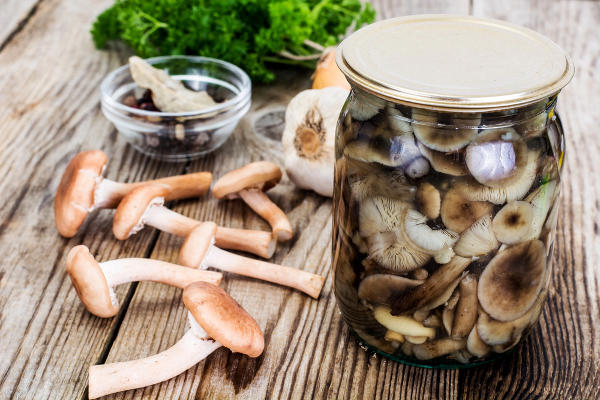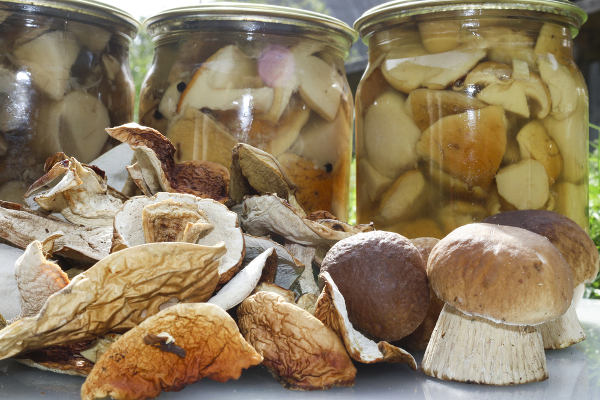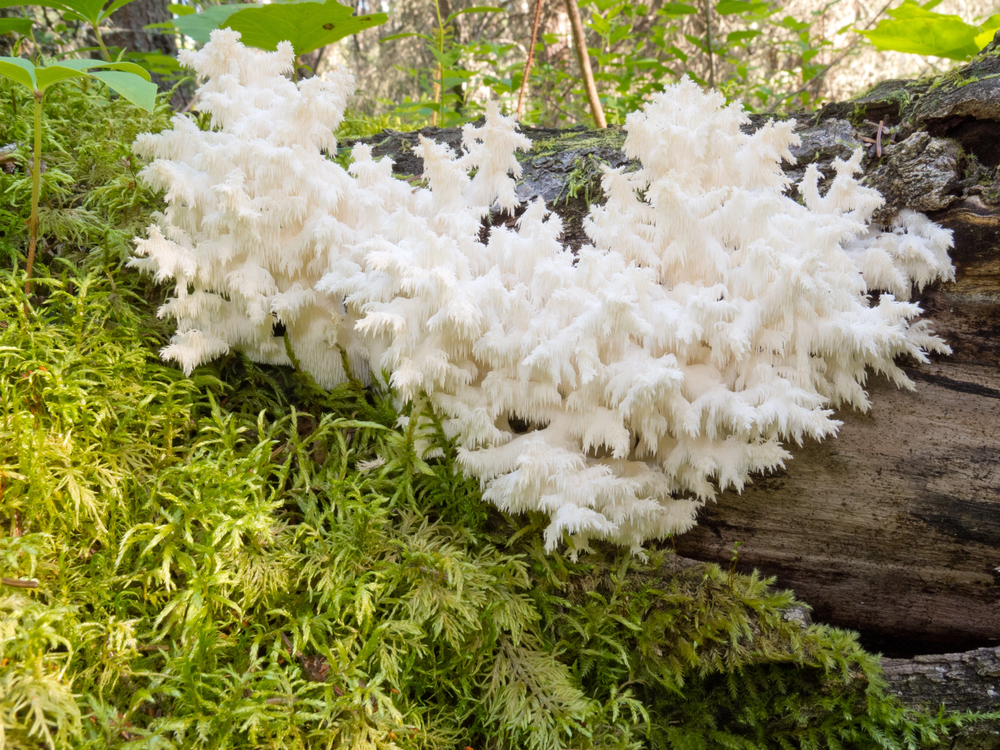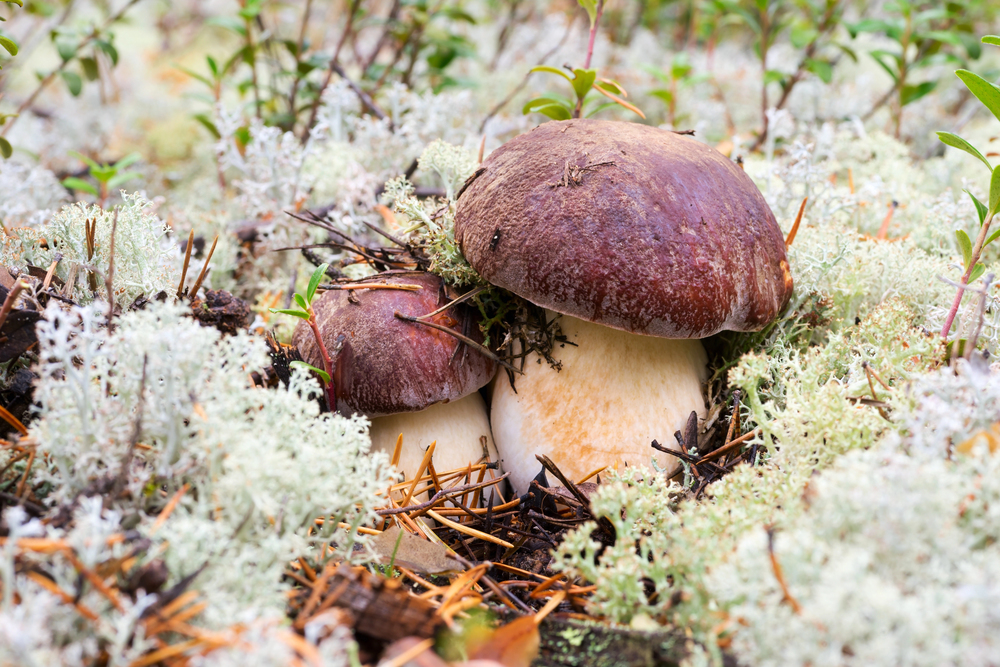Mushroom oil is an exciting way to elevate your cooking, adding a rich flavor to various dishes. The process begins with choosing the right mushrooms, as this greatly impacts the flavor. Using high-quality oil and optional aromatics is also important, and the infusion method plays a key role in achieving depth. Exploring these techniques will uncover practical steps and a range of culinary uses for your homemade mushroom oil.
Choosing the Right Mushrooms
Choosing the right mushrooms for making mushroom oil greatly influences the flavor and quality of the final product. A range of mushrooms can be utilized, but varieties such as shiitake, porcini, and cremini are especially celebrated for their rich umami flavors, which enhance the overall taste of the oil.
Fresh, organic mushrooms are the best choice. Look for those that are firm, unblemished, and free from spoilage. Sourcing from local farms or reliable suppliers ensures you receive a top-quality product essential for creating high-quality oil.
Consider the variety of mushrooms you want to use; popular choices include shiitake, cremini, and porcini, each offering distinct flavors and aromas. Whenever possible, opt for organic mushrooms to avoid harmful pesticides and to maintain purity in your culinary creations.
Additionally, pay attention to their scent; fresh mushrooms should have a pleasant earthy aroma. Avoid those with a strong, unpleasant odor, as this may signal spoilage.
Mushroom Oils: Flavor Profiles and Kitchen Applications
| Mushroom Type | Flavor Profile | Suggested Uses |
|---|---|---|
| Shiitake | Rich, earthy, and slightly smoky | Ideal for Asian dishes, stir-fries, and sauces. |
| Cremini | Meaty, robust, and slightly sweet | Great for pasta, risottos, and as a topping for pizzas. |
| Porcini | Intense, nutty, and umami-rich | Perfect for Italian dishes, soups, and risottos. |
| Oyster | Delicate, slightly sweet, and mild | Best for seafood dishes, salads, and light sauces. |
| Chanterelle | Fruity, nutty, and peppery | Excellent in gourmet dishes, sauces, and sautéed vegetables. |
| Maitake | Earthy, woodsy, and slightly spicy | Good for soups, stir-fries, and as a meat substitute. |
| Lion’s Mane | Seafood-like and slightly sweet | Great for vegan dishes, stir-fries, and as a seasoning for broths. |
| Enoki | Mild, slightly fruity | Ideal for salads, soups, and as a garnish for various dishes. |
| Morel | Rich, nutty, and complex | Perfect for upscale dishes, sauces, and as a topping for meats. |
Ingredients Needed
To create a flavorful mushroom oil, you’ll need a few key ingredients for the best taste and aroma. Start with fresh mushrooms—shiitake, cremini, or porcini work wonderfully due to their rich flavors. Aim for about one cup of finely chopped mushrooms to ensure a concentrated essence in your oil.
Next, select a high-quality oil as the base. Extra virgin olive oil, grapeseed oil, or avocado oil are great options that provide a neutral backdrop while complementing the mushrooms. Typically, about two cups of oil will be needed.
Enhance the flavor with aromatics such as fresh garlic cloves, thyme, or rosemary. A few cloves of garlic and a couple of sprigs of herbs will do the trick. Lastly, consider adding a pinch of salt to balance the flavors, though this is optional depending on your taste.
With these ingredients, you can create a delicious mushroom oil that enhances a variety of culinary dishes.

Preparation Steps
To create high-quality mushroom oil, start by selecting fresh, flavorful mushrooms that will impart the desired aroma and taste. After choosing the mushrooms, various infusion techniques can be used to effectively extract their essence. Understanding these preparation steps is essential for achieving a rich and aromatic oil.
Infusion Techniques Explained
After selecting the freshest mushrooms, it’s important to understand the various infusion techniques that will effectively extract their flavors into oil. The two primary methods are cold infusion and hot infusion, each offering unique benefits.
Cold infusion is a gentle method that preserves the delicate flavors and aromas of the mushrooms. To do this, finely chop the mushrooms and mix them with a neutral oil, such as grapeseed or olive oil. Seal the mixture in a jar and let it sit in a cool, dark place for a week or two, shaking it occasionally to enhance extraction.
In contrast, hot infusion speeds up the process, resulting in a more robust flavor. Start by sautéing the mushrooms in a pan over low heat with your chosen oil. This method allows for quicker release of oils and compounds. Once the mushrooms have softened and infused their essence into the oil, strain out the solids.
Both techniques require careful monitoring to prevent over-extraction or rancidity. By selecting the appropriate infusion method, you can create a richly flavored mushroom oil that enhances your culinary creations, allowing you to explore new tastes in your cooking.

Infusion Methods
When creating mushroom oil, choosing the right infusion method is key to achieving optimal flavor and aroma. The three main techniques are cold infusion, heat infusion, and the sous vide approach, each with its own benefits. Familiarizing yourself with these methods will help you select the best process for your culinary needs.
Cold Infusion Technique
The cold infusion technique extracts the delicate flavors and aromatic compounds from mushrooms without heat, preserving their vital oils, flavors, and nutrients. This results in a vibrant oil that enhances various culinary creations.
To start, choose high-quality, dried mushrooms like shiitake or porcini for their rich flavors. Finely chop the mushrooms to increase surface area for better infusion. Combine them with a neutral oil, such as grapeseed or sunflower oil, in a glass jar, ensuring the mushrooms are fully submerged to avoid spoilage.
Seal the jar tightly and store it in a cool, dark place for one to two weeks. Gently shake the jar every few days to promote the infusion. Once the desired flavor is reached, strain the oil using a fine mesh sieve or cheesecloth to remove the mushroom solids. The resulting mushroom oil is perfect for dressings, marinades, or drizzling over finished dishes for an aromatic touch.
Heat Infusion Method
The heat infusion method is an efficient way to extract flavors from mushrooms while enhancing their aromatic qualities. This technique uses gentle heat to expedite the infusion process, resulting in a rich, flavorful oil perfect for various culinary creations.
To implement the heat infusion method, follow these key steps:
| Step | Description | Time Required |
|---|---|---|
| 1 | Choose your mushrooms (e.g., shiitake, porcini) | 5 minutes |
| 2 | Chop mushrooms into small pieces | 10 minutes |
| 3 | Combine mushrooms with oil (e.g., olive, grapeseed) | 5 minutes |
| 4 | Heat mixture on low flame | 30-60 minutes |
| 5 | Strain and store in a glass bottle | 10 minutes |
Monitor the mixture closely to prevent overheating, which can damage the oil and alter the flavor profile. Once complete, your mushroom oil will be ready to enhance salads, pasta, and more, allowing you to explore a world of flavors in your culinary endeavors.
Sous Vide Approach
A sous vide method for making mushroom oil provides a precise and controlled way to infuse flavors, ensuring consistent results. This technique uses a water bath to maintain a steady temperature, which is essential for extracting the delicate essence of mushrooms while preventing burning or overcooking.
Start by selecting high-quality mushrooms, like shiitake or porcini, and coarsely chop them to enhance surface area. Combine the mushrooms with a neutral oil, such as grapeseed or canola, in a vacuum-sealable bag. Seal the bag to remove air, enhancing flavor infusion and preventing oxidation.
Set your sous vide immersion circulator to a temperature between 140°F and 180°F (60°C to 82°C), depending on your desired flavor intensity. Immerse the bag in the water bath for 1 to 3 hours, allowing the heat to gently extract the umami richness from the mushrooms. After the infusion is complete, strain the oil through a fine mesh sieve or cheesecloth to remove solids.
The resulting mushroom oil can be used in a variety of culinary applications, offering a gourmet touch to your dishes and inspiring your culinary creativity.
Cooking Time
When preparing mushroom oil, timing is essential for achieving the desired flavor and aroma. The cooking duration directly influences the infusion process, allowing the oil to absorb the rich essence of the mushrooms. A gentle heat is preferred to prevent the oil from overpowering the subtleties of the mushrooms’ taste.
For a stovetop infusion, aim for a cooking time of approximately 30 to 45 minutes. This allows the oil to warm gradually, drawing out the earthy notes without compromising the integrity of the mushrooms. If utilizing a sous vide method, maintain the temperature at around 160°F (70°C) for one to two hours. This precise control improves the infusion while preserving the vibrant flavors.
Be vigilant and attentive during the cooking process, as overheating can lead to bitterness and loss of quality. A well-timed infusion will yield a mushroom oil that is both aromatic and flavorful, ready to enhance a variety of dishes. The timing you choose can empower your culinary creativity, making it important to respect this aspect of the process for ideal results.
Straining the Oil
Straining the oil is an essential step in making mushroom oil, ensuring a smooth and refined final product. After cooking, where the mushrooms infused their essence into the oil, it’s important to remove any solid particles that may affect the texture and flavor.
To strain the oil, use a fine-mesh strainer or cheesecloth, which allows the liquid to pass through while capturing mushroom remnants. Position the strainer over a clean, heat-resistant container, ensuring it can accommodate the oil’s volume. Slowly pour the oil through the strainer, letting gravity do the work.
For an even clearer oil, consider repeating the straining process with a fresh piece of cheesecloth or a coffee filter. This additional step may take some time, but it results in a superior product that enhances your culinary creations.
Once strained, the mushroom oil will be ready for use, showcasing vibrant flavors without any unwanted sediment. This careful attention to detail not only elevates your dishes but also highlights the joy of crafting artisanal oils tailored to your taste.
Storing Mushroom Oil
Proper storage is essential for preserving the quality and flavor of mushroom oil. Store the oil in a cool, dark place, away from direct sunlight and heat sources, as exposure can lead to oxidation and diminish its flavor and shelf life.
Use amber or dark glass bottles, which protect against UV rays, and ensure the bottles are tightly sealed to prevent air exposure that can contribute to spoilage. If needed, transfer smaller amounts into separate containers to reduce air exposure to the main supply.
Refrigeration can extend the shelf life, especially for oil infused with fresh mushrooms. It is best to consume this oil within a month to enjoy its peak flavor. Always inspect the oil before use; if you notice any off smells or cloudiness, it’s advisable to discard it.
Flavor Variations
After properly storing mushroom oil, exploring various flavor variations can elevate your culinary experience. Infusing your mushroom oil with additional herbs and spices allows for personalization, enhancing the depth of flavor in your dishes. For a robust profile, consider adding garlic cloves, rosemary, or thyme during the infusion process. These ingredients not only complement the umami of the mushrooms but also introduce aromatic complexity.
If you’re looking for a spicy kick, infuse your oil with red pepper flakes or fresh chilies. This variation enhances the oil’s versatility, making it an exciting addition to dressings or marinades. For a sweeter note, try incorporating dried fruits like figs or apricots, which lend a subtle sweetness that balances savory dishes.
Experimentation is key—don’t hesitate to combine different herbs, spices, or even citrus peels to create unique flavor profiles tailored to your palate. Remember to strain the oil thoroughly after infusion to maintain clarity and stability. Enjoy the process of crafting your mushroom oil and uncover the numerous flavors that align with your culinary vision.
Culinary Uses
Mushroom oil is a versatile ingredient that enhances a wide range of dishes across various cuisines. Its rich umami flavor elevates everything from sautéed vegetables to complex sauces, enhancing the overall dining experience.
In Italian cuisine, a drizzle of mushroom oil over pasta or risottos imparts an earthy aroma. It also serves as a finishing oil for pizzas, complementing the flavors of cheese and herbs. In Asian dishes, mushroom oil enhances stir-fries, balancing the flavors of soy sauce and ginger.
Moreover, it’s an excellent choice for marinating proteins like chicken, fish, or tofu, infusing them with robust taste. When added to salad dressings, it adds a unique dimension that transforms a simple greens-based dish into a gourmet experience.
Mushroom oil can also be a delightful addition to homemade dips or spreads, such as hummus or cream cheese, further expanding its culinary potential. By incorporating mushroom oil, chefs and home cooks can embrace creativity in their culinary endeavors, crafting dishes that resonate with rich flavor and innovation.



